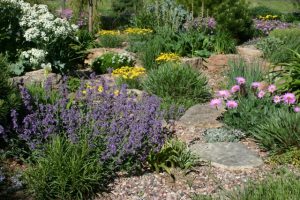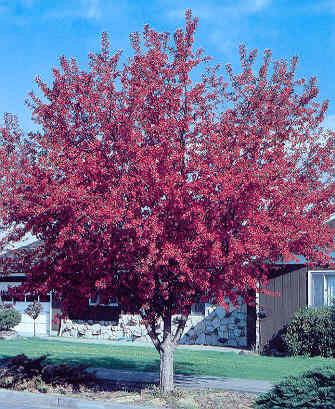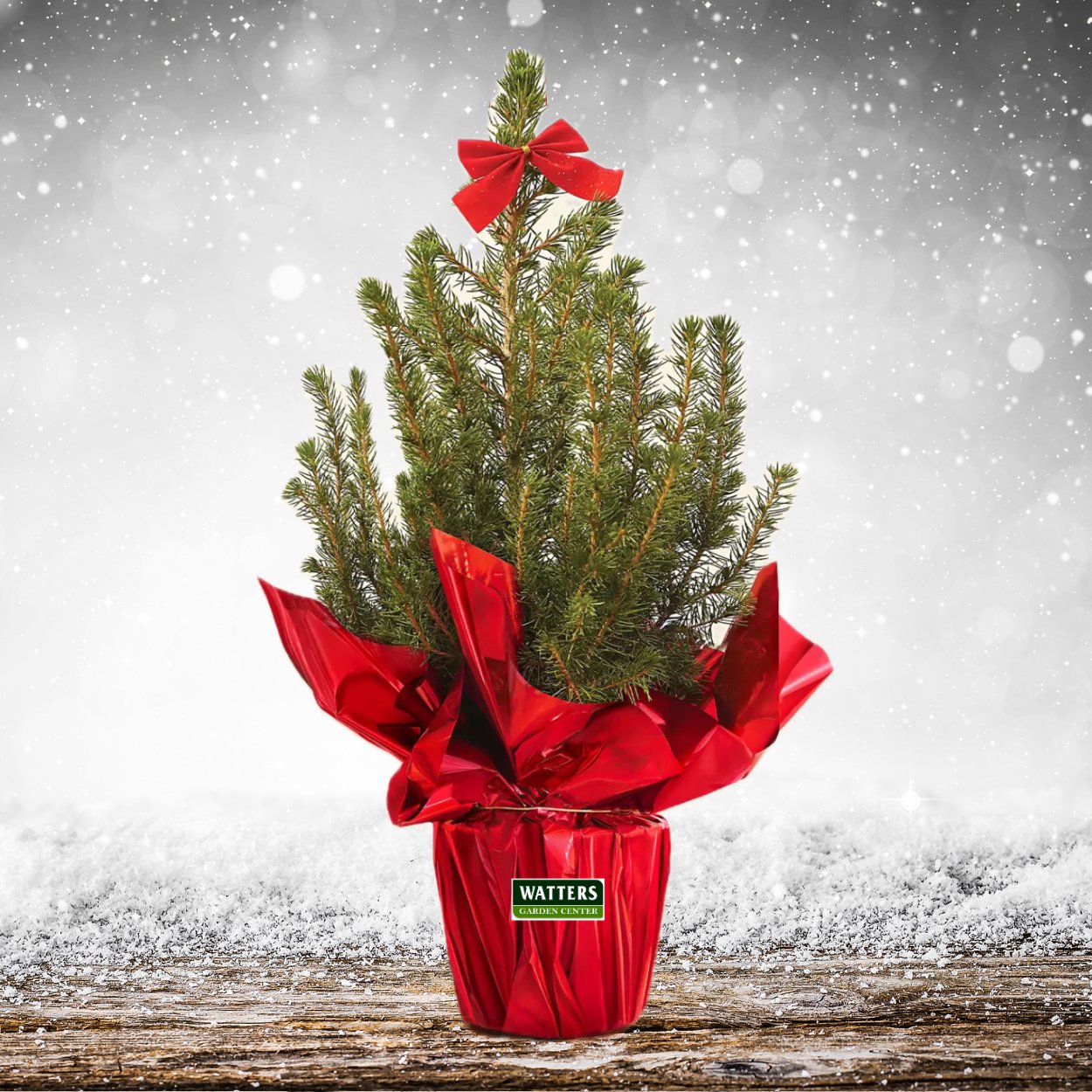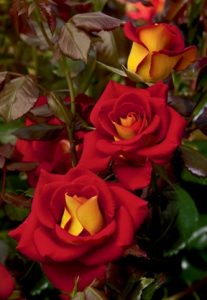 Wouldn’t it be wonderful if you could enjoy an attractive, colorful garden without spending all your free time working in it? Well, it can be done. All it takes is some knowledge about the right plants and the right mountain gardening techniques. Do your research for the best easy-care trees, shrubs, and perennials BEFORE you plant and you’ll save time and money now and for years into the future of your landscape.
Wouldn’t it be wonderful if you could enjoy an attractive, colorful garden without spending all your free time working in it? Well, it can be done. All it takes is some knowledge about the right plants and the right mountain gardening techniques. Do your research for the best easy-care trees, shrubs, and perennials BEFORE you plant and you’ll save time and money now and for years into the future of your landscape.
When considering hassle-free landscaping, the six cardinal principles in order of importance are:
1) Choose plants that are known to be reliable and problem free for your area and won’t outgrow their allotted spaces.
Use the right plant in the right place. Considering the bewildering array of plants available at garden centers, choosing the right plants for the right places will require a little research. Start by making a list of plants you like, even look around your neighborhood for interesting options. Consult gardening books and magazine articles to learn about the plants on your list, and ask the staff at your favorite garden center how well local conditions suit the plants that have caught your eye. Take quick pictures of your landscape, the plants you like, and the plants you dislike, then share them with the horticulturalist working with you. Keep in mind that a picture is worth a thousand words and helps to narrow down recommendations.
Allow enough space for the size of each plant at its maturity. A common mistake is to choose plants that look just right on planting day and then rapidly outgrow their allotted spaces, creating a continual maintenance headache. Unlike an interior design that looks best the day it is installed, a landscape design should look its best when it’s about five years old.
 Some plant varieties have resistance to pests and diseases that usually plague their particular species. For example, ‘Prairie Fire crabapple’ is resistant to both apple scab and fire blight. ‘Flower Carpet’ and ‘Knockout’ roses rarely are troubled by black spot, mildew, or thrips, problems that are common to other landscape shrubs. Choosing disease resistant varieties results in fewer pests that ultimately will translate into less maintenance.
Some plant varieties have resistance to pests and diseases that usually plague their particular species. For example, ‘Prairie Fire crabapple’ is resistant to both apple scab and fire blight. ‘Flower Carpet’ and ‘Knockout’ roses rarely are troubled by black spot, mildew, or thrips, problems that are common to other landscape shrubs. Choosing disease resistant varieties results in fewer pests that ultimately will translate into less maintenance.
 Dwarf varieties such as Alberta Spruce grow very slowly, as little as an inch per year. Such slow growers are more expensive initially because a plant that is 4-6’ tall may be 15 years old. Growers have invested as much time and materials in these as in faster growing varieties that are much larger. But the initial extra cost pays off over time because such plants need minimal if any pruning. Other good dwarf varieties are petite blue butterfly bush, abbotswood potentilla, acoma crape myrtle, boulder blue fescue, crimson ruby barberry, flame maple, sand cherry, and gilded edge silverberry.
Dwarf varieties such as Alberta Spruce grow very slowly, as little as an inch per year. Such slow growers are more expensive initially because a plant that is 4-6’ tall may be 15 years old. Growers have invested as much time and materials in these as in faster growing varieties that are much larger. But the initial extra cost pays off over time because such plants need minimal if any pruning. Other good dwarf varieties are petite blue butterfly bush, abbotswood potentilla, acoma crape myrtle, boulder blue fescue, crimson ruby barberry, flame maple, sand cherry, and gilded edge silverberry.
2) Reduce the size of your lawn or eliminate it entirely.
3) Prepare mountain soils before planting so plants get a strong start. Amending the planting hole with composted mulch provides just the boost new plants need.
4) Use shredded cedar bark to discourage weeds and bugs and to conserve soil moisture.
 5) Feed often with slow release organic fertilizers. Even if plants require only minimal maintenance, fertilizer and water are essential to healthy growth. To make fertilizing a snap, use all natural plant foods that release over an extended period of time. I created “All Purpose Plant Food” 7-4-4 specifically for mountain gardens. It not only feeds the plants, but also feeds the soil so plants want to root deeper into our mountain soils. Healthier, deeper roots translate into a healthier plant.
5) Feed often with slow release organic fertilizers. Even if plants require only minimal maintenance, fertilizer and water are essential to healthy growth. To make fertilizing a snap, use all natural plant foods that release over an extended period of time. I created “All Purpose Plant Food” 7-4-4 specifically for mountain gardens. It not only feeds the plants, but also feeds the soil so plants want to root deeper into our mountain soils. Healthier, deeper roots translate into a healthier plant.
6) Install an automatic drip irrigation system.
So there you have it. Follow these simple suggestions and you almost can ignore your garden and enjoy it, too. My newly created “Preferred Plant Guide” is a list of the best local landscape plants. Of course, it’s free for the asking when you visit the garden center or click on the name above to download.
~ * ~
 Plant Find of the Week is the Ketchup & Mustard Rose – The catchy name definitely describes the contrasting colors of this rose. Bright-ketchup-red paints the topside of each petal, but turn the petals over to find French’s-mustard-yellow for a breathtaking two-tone color effect as the blossoms open. Clusters of striking, fragrant blooms appear in flushes as the monsoons arrive. Each long and nearly thornless stem sports attractive, glossy foliage. This perennial is like eye candy to the landscape and easy to grow with minimal care. We quickly ran out of our spring stock, but are flush with a new shipment. Hurry in before we run out again!
Plant Find of the Week is the Ketchup & Mustard Rose – The catchy name definitely describes the contrasting colors of this rose. Bright-ketchup-red paints the topside of each petal, but turn the petals over to find French’s-mustard-yellow for a breathtaking two-tone color effect as the blossoms open. Clusters of striking, fragrant blooms appear in flushes as the monsoons arrive. Each long and nearly thornless stem sports attractive, glossy foliage. This perennial is like eye candy to the landscape and easy to grow with minimal care. We quickly ran out of our spring stock, but are flush with a new shipment. Hurry in before we run out again!
~ * ~
Garden Photo Contest: Local growers have generously donated flowering perennial plants for our garden photo winners. Contest eligibility is simple: First, submit your best garden photo at http://woobox.com/ae4phr. Then, have your friends (and yourself) vote for your photo. The entry with the most votes wins! I have been encouraging local gardeners to download garden photos that include themselves and their friends. Hint: Pictures with dogs, cats, and other garden wildlife always receive the highest numbers of votes.
~ * ~
Free Garden Class: Saturday (9:30 – 10:30) our class topic is ‘Ground Covers & Plants to use Instead of Mowing’. These fast growing plants stay low & tight with less care that requires no lawn mower. Learn which evergreen shrubs, herbs, and vines soften all that rock, hold the soil from eroding, and are cool in summer while looking good all year long. A few plants go a long way when gardeners know which plants to use locally. As usual, this class is free for the taking.
- Online class schedule at Garden Classes
- Class schedule on FaceBook
Until next week, I’ll see you at Watters Garden Center.
Ken Lain can be found throughout the week at Watters Garden Center, 1815 W. Iron Springs Rd in Prescott, or contacted through his website, Watters Garden Center, or Watters FaceBook page.

